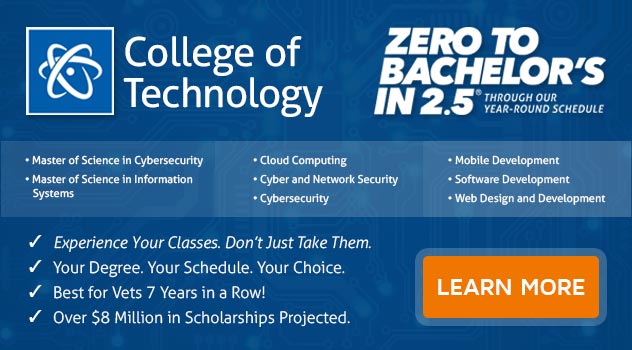
“We’ve been hacked.” Very few phrases generate the kind of dread, panic, and anger inspired by this short statement. Hackers are everywhere online, and they don’t discriminate—rich, poor, private citizen, corporate enterprise, or startup—we are all potential targets. That’s why cybersecurity specialists work to secure networks against attack, and protect data from theft. The history of cybersecurity and hackers dates back much further than you might think—long before computers were invented.
Historic Hackers
1903: The First “Secure Communications” Hack & First Penetration Testing
Interestingly enough, the first-known “hack” took place in Morse code, via telegraph in 1903.
Guglielmo Marconi had staged a demonstration of his wireless telegraph machine, introducing it as the first long-distance secure transmission. His plan was to send a message from Cornwall to London, a distance of approximately 300 miles.
Before his demonstration began, the machine sprang to life. At first deemed a technical glitch, attendees soon recognized a pattern: Morse code. Someone had hacked the machine to send their own message, mocking Marconi!
Days later, magician Nevil Maskelyne claimed responsibility in a letter to a newspaper. Maskelyne was perhaps the first hacker, as well as the first to snoop out a system vulnerability and bring it to light (a process now known as penetration testing).
Tech Model Railroad Club
1946: Formation of MIT student hacking community organization
The founders of the Tech Model Railroad Club at MIT were among the world’s first hackers, and their organization remains the oldest and one of the most well-known subject matter experts. Although they started out toying with the circuits and electronics of model trains, many members moved up to programming computers, eventually popularizing the word “hacker.”
Phone Phreak Hackers
1960s: Telephone hacking, or “phreaking,” gains popularity as well as media attention.
By the ‘60s, hackers had discovered the exploitative capabilities of telecommunications, recording or mimicking the distinctive dial up sounds used (remember those annoying screeches and howls when AOL booted up?) to control the phone network.
“Phone phreaks” utilized vulnerabilities to keep phone lines busy so they could make free calls, rack up enormous phone bills on others’ accounts, cast a wide net for any additional system vulnerabilities—public or private—and wreak havoc in general.
Their antics caught the attention of Steve Wozniak and Steve Jobs (two eventual co-founders of Apple Inc) who started a small business selling tech supplies to “phreaks.” Many of these early hackers (like Kevin Mitnick) would go on to convert to “white hat” hackers, building and selling their own cybersecurity software.
The Birth of the Internet
1962: J.C.R. Licklider Conceives the Internet
Amid fears of the Cold War wiping telephone communications out of existence, M.I.T. scientist and ARPA member J.C.R. Licklider suggested a “galactic network” of computers which spoke to one another.
That way, governments could still communicate in the event of a devastating telecommunications attack. Sounds like a neat idea, right?
1966: ARPANET Project
Initiated by the DoD’s ARPA, ARPANET was a “wide-area packet-switched network,” the first of its kind. Packet switching allowed data to be broken down into “packets” before transit, each taking its own route to end up in the same place. This, coupled with its distributed control and TCP/IP protocol suite, formed the basis of the internet we use today.
ECPI University Opens and is one of the first academic institutions to offer computer programming courses.
1967: First Approved Penetration Testing
IBM approached a computer club at a high school in Chicago and offered full access to their (new-at-the-time) APL programing language. Students were allowed free reign and encouraged to “bomb the system.”
Afterwards, IBM credited “a number of high school students” in their documentation. The spin-off names (ALOHAnet for the University of Hawaii, for example) became too complex to keep up with, and the project was renamed the “internet.”
1969: First Computers Connected
UCLA student Charles Kline sent the first internet message, from one campus computer to another at the Stanford Research Institute. The message: “Login.”
The first attempt crashed the system, and the Stanford computer only received “Lo.” An hour later, the system was restored, and the full word was successfully transmitted. Over the next few weeks, an entire four-node network was established.
First Malware Virus & Cyber Crime Conviction
1971: The Creeper is the First Computer “Worm”
The very first self-replicating computer malware was created by a careless accidental experiment.
Bob Thomas was simply testing the possibilities, and fortunately the experiment caused no actual damage—it simply spread from computer to computer with the message “I’m the Creeper. Catch me if you can!”
1972: The Reaper is the First Anti-Virus Software
Challenge Accepted!
In response to the worm’s taunt, Ray Tomlinson designed the first anti-virus software and named it the “Reaper.” A fitting title, as its sole purpose was to hunt down and eliminate the “Creeper,” at which it was successful.
1980: The New York Times Defines the Term “Hackers”
The New York Times reported on a security breach with the following description of hackers:
“Technical experts; skilled, often young, computer programmers, who almost whimsically probe the defenses of a computer system, searching out the limits and the possibilities of the machine. Despite their increasingly subversive role, hackers are a recognized asset in the computer industry, often highly prized.”
1981: The First Cybercrime Conviction
Ian Murphy (AKA Captain Zap) became the first person convicted of a cybercrime when he hacked and altered the internal clock of AT&T. This allowed users to make calls during peak times—for free.
1986: NSF Funds National Supercomputing Centers and Gives Access/Interconnectivity via NSTNET
U.S. Computer Fraud & Abuse Act Passed
As the net was provided to universities and educational institutions for research purposes, more and more people began to glimpse the potential of this new digital world—including criminals.
First Cyber Espionage & Felony Conviction
1986 - 1987: First Cyber Espionage Case (German Hackers Steal American Data & Sell it to KGB)
A group of German hackers led by Markus Hess gained access to an estimated 400 U.S. military computers, selling their findings (semiconductor, satellite, space, and aircraft tech) to the Soviet KGB.
Fascinatingly enough, Hess and his cohorts were only caught due to a system administrator attempting to resolve a minor accounting error—on his first day on the job.
Clifford Stoll’s first task at the Lawrence Berkeley Laboratory was to correct a $0.75 inaccuracy in the accounting system. He quickly discovered that the system had been compromised, uncovered the vulnerability the hacker had used to gain entry, and pinpointed exactly what the hacker had done.
Stoll then suggested a trap—what we call a “honeypot” today. He worked with the FBI and AT&T to strip away the hackers’ various methods of concealment and track his real-world location. You can learn more about this wild ride in Stoll’s book, The Cuckoo’s Egg.
1988: The Morris Worm is First Felony Conviction Under Computer Fraud & Abuse Act
Although not officially the first, the Morris Worm is the most famous computer worm.
By 1988, an estimated 60K computers were connected to a fragile, fledgling internet. Enthusiastic computer scientist Robert Morris decided to build a program to formally count them.
The 23-year-old Cornell graduate was concerned about system administrators deleting the program before it had finished its work, so he programmed it to replicate itself 14% of the time—unintentionally rendering his harmless exercise into a vicious Denial-of-Service (DoS) attack.
The program spread like wildfire, infecting computers and dramatically slowing productivity as it pulled power towards its own replication. According to the FBI’s report on the incident, it is estimated that six thousand computers were infected within twenty-four hours—literally 10% of the connected computers in existence.
The media went wild with the story. Morris was arrested and later convicted under the Computer Fraud & Abuse Act.
Critics have commented that Morris “should have tried it on a simulator first.”
The End of an ARPA-Era
1990s: ARPANET formally decommissioned, the occasion marked with a lovely requiem:
“It was the first, and being first, was best,
but now we lay it down to ever rest.
Now pause with me a moment, shed some tears.
For auld lang syne, for love, for years and years
of faithful service, duty done, I weep.
Lay down thy packet, now, O friend, and sleep.”
World Wide Web goes Worldwide & First Browser (Mosaic 1.0) Launches
As the internet and its first browser began to welcome more users, it also connected criminals to the public. To combat the increasing malware and malicious activity, tech companies began mass producing and distributing firewalls and anti-virus software.
2000s: Cyber Attacks Become a Way of Life
From the early 2000s to the foreseeable future, cyber warfare has become a constant. Warfare is largely digital now. Countries attack more than geographical borders these days—spying, stealing, sabotaging elections, holding healthcare facilities for ransom, and circulating propaganda to a wider audience than ever before.
The potential of digital connection is far-reaching, and not all of it is pretty. It is up to cybersecurity specialists, the “white hat” hackers, to protect the world’s data and keep individuals safe. Their efforts on computers have a very tangible effect in the real world.
2022: Forecast of Cybersecurity
We have gone digital; the Internet of Things connects our phones to our watches and even our cars and household appliances. Every detail of our lives is contained within databases or captured in algorithms. Marketing has never been more targeted as we trade our personal data for convenience, memberships, or promotional discounts.
Cybersecurity has, quite literally, never been more important.
As hackers grow more sophisticated, internet users must also grow more vigilant. Emails from unknown senders are highly suspect, passwords must be stored in secure keys, and software updates are vital to prevent massive breaches. And they can still happen anytime.
Cybersecurity specialists work in every industry to protect valuable data and keep users safe from cyber attacks. Are you up for the challenge of joining them?
Are You Ready to Start Your Cybersecurity Education?
If you’re interested in and inspired by these pioneers of the internet, consider earning a degree in cybersecurity. At ECPI University you could earn a Bachelor of Science in Computer & Information Science with a Major in Cyber & Information Security Program with a Cybersecurity Track—and you could earn it in as little as 2.5 years.
It Could Be the BEST Decision You Ever Make!
 The National Security Agency and the Department of Homeland Security have designated ECPI University as a National Center of Academic Excellence in Cyber Defense Education (CAE-CDE) for the Bachelor of Science in Computer and Information Science: Cyber and Information Security Technology major, Cybersecurity Track through academic year 2023. Designation Letter can be viewed here.
The National Security Agency and the Department of Homeland Security have designated ECPI University as a National Center of Academic Excellence in Cyber Defense Education (CAE-CDE) for the Bachelor of Science in Computer and Information Science: Cyber and Information Security Technology major, Cybersecurity Track through academic year 2023. Designation Letter can be viewed here.
DISCLAIMER - ECPI University makes no claim, warranty, or guarantee as to actual employability or earning potential to current, past or future students or graduates of any educational program we offer. The ECPI University website is published for informational purposes only. Every effort is made to ensure the accuracy of information contained on the ECPI.edu domain; however, no warranty of accuracy is made. No contractual rights, either expressed or implied, are created by its content.



